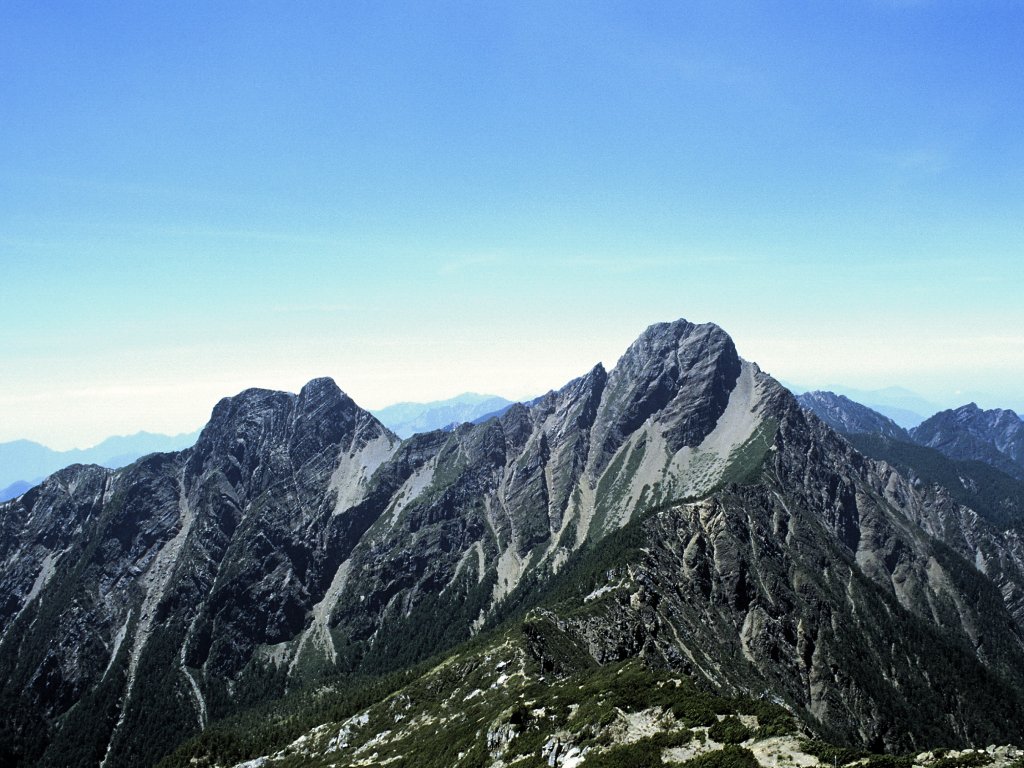Featured image: Yushan (Jade Mountain) in Taiwan. From Wikimedia Commons by Kailing3 under a CC-BY-SA 3.0 license.
Authors: R.Y. Chuang, C.H. Lu, C.J. Yang, Y.S. Lin, and T.Y. Lee
Journal: Geophysical Research Letters
The height of a mountain range results from a hard-fought battle between tectonic plates and the forces of erosion. Earthquakes generated by clashes between plates cause the upward motion of rock even as they shake the landscape, causing large and numerous landslides. When a large earthquake occurs, which process wins? Does more rock go up than come down, leading to a higher mountain range? Or does shaking-induced erosion remove more material than is uplifted by the earthquake? New research suggests that earthquakes might be able to build mountains up faster than landslides can bring them down.
Some past earthquakes, including China’s magnitude 8 Wenchuan quake, caused earthquake-induced landslides that mobilized more material than was uplifted by the quake. This and other case studies led past researchers to argue that earthquakes tend to cause net reductions in mountain range elevation. A new study tested this idea using data from the 1999 Chi-Chi earthquake in Taiwan.
R.Y. Chuang and colleagues calculated the volume of rock uplifted by the Chi-Chi earthquake using synthetic aperture radar, a technique that compares repeated radar images from satellites to determine how the land surface has changed between images. They also used data from GPS stations, each of which accurately measures the absolute position and elevation of a point on Earth’s surface. Radar and GPS records suggest that parts of the area affected by the Chi-Chi earthquake were uplifted by up to 8 meters. Summing up vertical uplift over the area affected by the earthquake reveals that approximately 2.6 cubic kilometers of rock were uplifted during the quake.
To see whether the mountains went up or down on average down during the quake, the authors compared their uplift estimates to existing estimates of the volume of landslides caused by the Chi-Chi event. The landslide volume was only about one-fifth of the uplifted volume, meaning that four-fifths of the rock thrust upward by the earthquake went towards making Taiwan taller. The Chi-Chi earthquake caused net mountain building, which contrasts with past work arguing that earthquakes mainly bring mountains down through landslide erosion.
The authors also found that the most earthquake-induced uplift occurred in a different place from the area of maximum landslide erosion. In other words, the part of the landscape going up the fastest is not experiencing the most landslide erosion. This discrepancy might be caused by the fact that maximum uplift occurs where the earthquake-causing fault intersects Earth’s surface, while maximum landsliding occurs near the earthquake epicenter, or the point of the surface directly above the location of the quake.
So it is, the authors argue, that earthquakes can build mountains by producing uplift that is both greater than and spatially separated from earthquake-induced landslide erosion. But mountains get steeper and steeper with each uplift event, and there must come a point when steep, landslide-prone slopes erode enough to balance out earthquake-induced uplift. Until then, earthquakes might be better at building up Earth’s mountain ranges than they are at destroying them.

Building mountains by Charlie Shobe is licensed under a Creative Commons Attribution-ShareAlike 4.0 International License.

